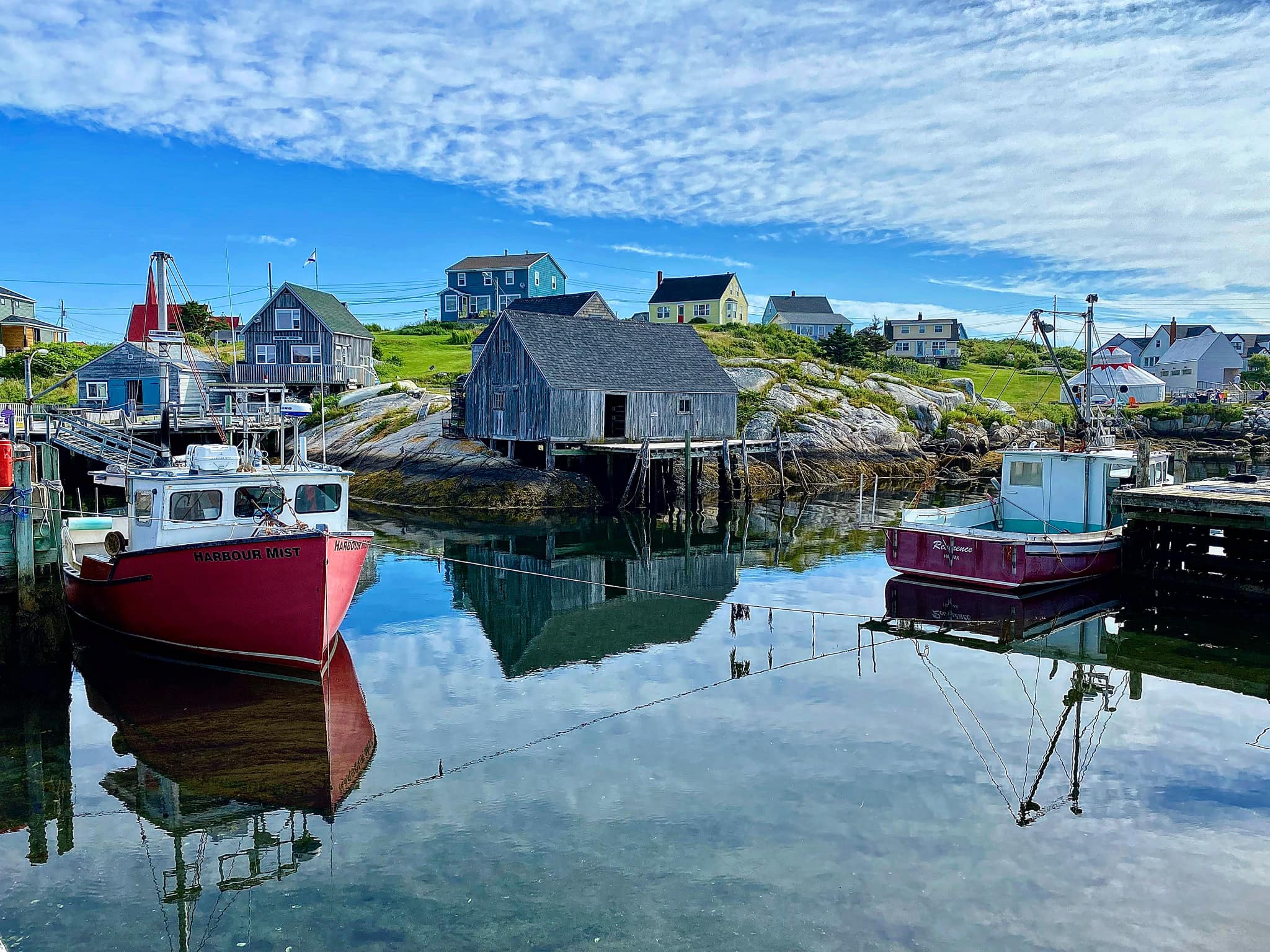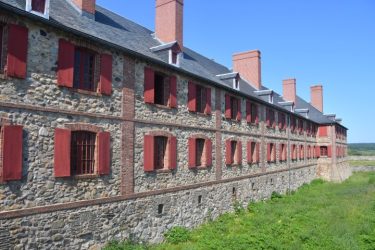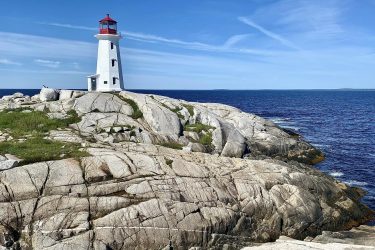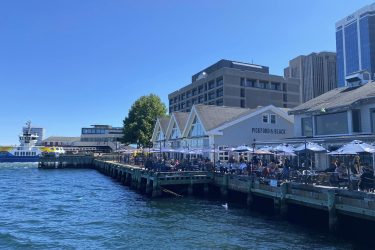Eastern Canada’s lovely province of Nova Scotia is renowned for its breath-taking coastline, extensive history, and welcoming residents. There are numerous things to see and do if you are considering travelling to this region of the world.
Halifax, the provincial capital, is one of the most visited places in Nova Scotia. You may stroll along the famed Citadel Hill, engage in the local arts and cultural scene, and explore the area’s ancient shoreline. Halifax is a terrific destination to experience the local cuisine and nightlife because it is home to several top-notch restaurants and bars.
Visit Cape Breton Island, where the picturesque Cabot Trail is located, if you have an interest in nature. The 185-mile route offers breath-taking vistas of the ocean and the surrounding area as it winds through the Cape Breton Highlands National Park. In the region, you may also go hiking, kayaking, or whale watching.
In communities like Lunenburg and Annapolis Royal, you may learn more about Nova Scotia’s extensive past. These quaint towns are home to museums and historically significant structures that offer an insight into the province’s past.
In conclusion, a trip to Nova Scotia is a wonderful way to experience the charm and friendliness of Canada’s east coast. It’s no surprise that this province is a well-liked vacation spot for tourists from all over the world given the abundance of things to see and do there. This article, we will give you some of the biggest tourist attractions in Nova Scotia.
Lunenburg, Nova Scotia
The gorgeous Canadian province of Nova Scotia is home to Lunenburg. It was established in 1753, but its long history is still visible in the restored buildings and the traditional fishing business. Lunenburg was recognised for its distinctive cultural and historical value when it was named a UNESCO World Heritage site in 1995.
The town’s small alleys are dotted with adorable, vibrantly coloured cottages, and its coastline is bordered by fishing boats. The Fisheries Museum of the Atlantic offers displays on the fishing industry and the town’s contribution to it, allowing visitors to learn more about the town’s history and culture. The Lunenburg Academy, a stately structure constructed in 1895, is now a community centre and a well-liked location for events and weddings.
In addition to its cultural features, Lunenburg provides a variety of recreational activities, such as hiking, kayaking, and whale watching. The well-known Peggy’s Cove lighthouse and Kejimkujik National Park are two nearby attractions.
Overall, Lunenburg is a must-see location for everyone interested in Canadian history, culture, and natural beauty.
Fortress of Louisbourg, Nova Scotia
Historical landmark The Fortress of Louisbourg is situated in Cape Breton Island, Nova Scotia, Canada. One of the most notable French military strongholds in the region, it was initially constructed by the French in the 18th century to safeguard their interests in North America.
As a crucial node for the fur trade and other economic activity, the Fortress of Louisbourg was a humming hive of trade and commerce. Throughout the Seven Years’ War, it also acted as a fortress, defending the French possessions against the British and their allies.
The British besieged the bastion and eventually took control of it in 1758, putting an end to French colonial rule in North America. After being taken, the stronghold was finally abandoned after being partially damaged.
The Fortress of Louisbourg is a well-known tourist destination today, drawing travellers from all over the world who are eager to learn about the area’s history. Visitors may now get a first-hand look at what it was like to live in a French colonial castle thanks to the site’s painstaking restoration and reconstruction to that era’s appearance. Anyone interested in Canadian or North American history must see the Fortress of Louisbourg, a remarkable illustration of colonial history.
If you would like to book a tour to see the Fortress of Louisbourg, click here or on the Get Your Guide image below to select from one of our preferred suppliers.
Peggy’s Cove Lighthouse, Nova Scotia
In Nova Scotia, Canada, there is a famous and historic lighthouse called Peggy’s Cove Lighthouse. The 15-meter-high lighthouse was initially constructed in 1868 to aid in directing fishing boats and other vessels safely to shore. Since then, it has grown to be one of Canada’s most popular tourist destinations, drawing tourists from all over the world.
A lovely fishing community surrounds the lighthouse, which is perched atop a sizable granite outcrop. Visitors can take a beautiful stroll along the rocky shoreline and marvel at the magnificent views of the Atlantic Ocean. The region is particularly well-known for its distinctive geology, which includes old rocks that have been sculpted by nature over millions of years.
Peggy’s Cove Lighthouse is well known for its place in popular culture in addition to its historical significance and natural beauty. It has been depicted in innumerable works of art, snapshots, postcards, and even graced a Canadian $1 bill. Peggy’s Cove Lighthouse is unquestionably worth a visit, whether you are a history buff, a nature enthusiast, or just looking for a lovely and tranquil location to unwind.
Cape Breton Island, Nova Scotia
Off the coast of Nova Scotia, is the lovely and magnificent island of Cape Breton. There are roughly 132,000 people living on the island, which has a surface size of 10,311 square kilometers. It is well-known for its breath-taking natural beauty, extensive history, and dynamic culture.
On Cape Breton Island, you may enjoy hiking, biking, golfing, fishing, and kayaking, among other outdoor pursuits. A number of national parks are also located on the island, notably the Cape Breton Highlands National Park, which is renowned for its breath-taking views, hiking trails, and wildlife.
The island is home to a number of historical buildings and museums, including the Fortress of Louisbourg, a fortress from the 18th century that has been restored to provide tourists a look into colonial life. The colorful culture of Cape Breton Island, which features local cuisine, dancing, and music, is also well-known.
Overall, Cape Breton Island is a place that lovers of the outdoors, culture, and history must visit. It is distinctive and unforgettable due to its magnificent landscapes, extensive history, and vibrant culture and cuisine.
Halifax Citadel National Historic Site
The Halifax Citadel National Historic Site is a famous landmark and a reminder of the city’s lengthy history. To defend Halifax’s harbour against prospective invasions, this fortified building was erected in 1856. The Citadel, a star-shaped building that has been painstakingly conserved, is now a well-liked tourist destination.
The ramparts of the fort are open to exploration, and visitors may view the cannons that were used to protect the harbour. A museum inside the fort displays the history of the Citadel and its contribution to Halifax’s growth. Visitors can also experience what life was like for soldiers stationed at the Citadel through interactive exhibitions.
Visitors can travel back in time and experience the fort’s rich history through the Citadel’s guided tours and re-enactments. Additionally, there is a gift shop where guests can buy keepsakes and souvenirs.
Overall, anyone visiting Halifax should make time to visit the Halifax Citadel National Historic Site. Visitors of all ages will find it fascinating and educational due to its extensive history and beautiful architecture.
Halifax Waterfront
Canada’s Halifax, Nova Scotia, is home to the popular Halifax Waterfront. A bustling public area offers a distinctive mix of dining, entertainment, and retail opportunities in a historic port.
In addition to a walkway that parallels the harbor, the waterfront is more than 4 kilometers long. Strolling along the harbor, visitors may take in the breath-taking views of the water and the numerous ships and boats that are docked there.
There are numerous eateries, cafes, and shops on the Halifax Waterfront, giving customers a variety of alternatives. The city’s rich history and culture are also showcased in a number of museums and galleries.
The Halifax Waterfront holds a number of events and festivals throughout the year, including the Halifax International Busker Festival, which draws artists from all over the world.
Overall, there is something for everyone at the Halifax Waterfront, which is a lively and exciting location. For anyone visiting Halifax, a must-see location is sure to make an impression.
Annapolis Valley
The Annapolis Valley is a charming area in the Canadian province of Nova Scotia. Along the Bay of Fundy, one of the most magnificent natural wonders in the world, it runs for more than 120 kilometres. The valley is a well-liked vacation spot for foodies and wine fans because of its thriving farms, numerous orchards, and top-notch vineyards.
There are many historical sites and museums to visit in the Annapolis Valley, which is also rich in history. Before European settlers came in the 1600s, the Mi’kmaq First Nations people called it home for tens of thousands of years. At locations like Fort Anne National Historic Site, Grand-Pré National Historic Site, and Annapolis Royal Historic Gardens, visitors can learn about the region’s heritage.
The valley’s breath-taking scenery, including the tidal bore occurrence in the Bay of Fundy, the Look off viewpoint, and the Cape Split hiking trail, will appeal to nature lovers. The Annapolis Valley has something for everyone, from its rich cultural legacy to its spectacular natural beauty and bountiful farms.
Kejimkujik National Park
Southwest Nova Scotia is home to the unspoiled wilderness of Kejimkujik National Park. More than 400 square kilometers of animals, including moose, beavers, otters, and black bears, call the park home. Kayakers, canoeists, and swimmers enjoy the park’s sparkling lakes, rivers, and streams, which are especially well-known for their clarity.
The main park and the backcountry are the two separate sections of the park. Over 60 km of hiking routes can be found in the main park, including the well-liked Hemlocks and Hardwoods Trail and the Mill Falls Trail. The park’s historic sites, which include petroglyphs created by the Mi’kmaq First Nations people thousands of years ago, are also open to visitors.
Only via canoe or kayak, the backcountry part of the park provides a wholly authentic wilderness experience. Visitors can camp out beneath the night, canoe through scenic rivers and lakes, and watch wildlife in its natural setting.
A real jewel of Nova Scotia, Kejimkujik National Park provides visitors with the chance to connect with nature and discover the area’s rich cultural history.
Festivals in Nova Scotia
The coastal jewel of Canada, Nova Scotia, presents a tapestry of festivals that honor its illustrious past, varied culture, and breath-taking scenery.
Street performers from all over the world congregate in Halifax for the annual Halifax International Busker Festival to enchant people with their captivating performances and eccentric antics. It serves as both a talent display and a monument to the city’s appreciation of the arts.
The October Celtic Colours International Festival prominently highlights Nova Scotia’s Celtic history. Celtic communities from throughout the world come together to celebrate their common traditions via colourful performances and cross-cultural interactions.
Wine lovers will enjoy the Nova Scotia Icewine Festival, which takes place in the Annapolis Valley. With tastings of superb Icewines taking place against a backdrop of stunning vineyards, it emphasises the province’s thriving wine economy.
One of the most prestigious music festivals in the area, the Halifax Jazz Festival, invites jazz greats and modern performers to the city, filling the air with beautiful melodies and rhythms.
It goes without saying that Nova Scotia is known for its maritime tradition, and events like the Nova Scotia International Tattoo honor this marine heritage with breath-taking performances by military and civilian bands, dancers, and entertainers from around the globe.
These celebrations in Nova Scotia encapsulate the spirit of the region and invite locals and guests to celebrate the rich cultural diversity, artistic brilliance, and welcoming nature of the locals.















